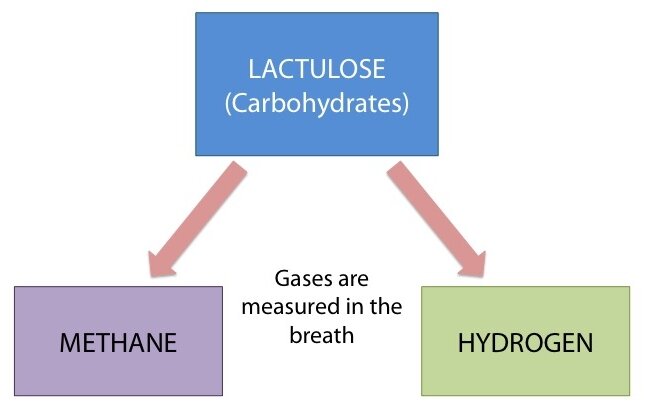Understanding Sibo: What is it and How To Diagnose it
I'm acutely aware of the lack of information out there about SIBO (Small Intestinal Bacterial Overgrowth), which is sad because it is now estimated that up to 78% of IBS cases can be attributed to Sibo. Also, a staggering 66% of patients with celiac disease tested positive for bacterial overgrowth according to the American Journal of Gastroenterology. The more I started mentioning I have it, the more questions I got and the more I realized many of you are probably suffering from this. Let's discuss the symptoms of SIBO and see if any of it sounds familiar.
SIBO SYMPTOMS
perfect health mind + body
Gas
Bloating (many describe looking pregnant)
Diarrhea/constipation
Intolerance to sugars, fermented foods, or starchy carbs
Abdominal pain or cramping
Diagnosis of IBS or IBD
Food intolerances such as gluten, casein, lactose, fructose, etc
Chronic illnesses such as fibromyalgia, chronic fatigue syndrome, diabetes, neuromuscular disorders and autoimmune diseases
B12 deficiency as well as other vitamins and mineral deficiencies
Fat malabsorption
My Diagnosis
I first heard the term SIBO in my own research, after a frustrating visit to Mayo Clinic, where I was given no definitive answers as to the cause of my digestive issues. And let's not forget the nearly decade long struggle in and out of GI offices, where I was given an anti-depressant prescription and sent home with the murky diagnosis of "IBS."
In 2015, only a few holistic practitioners were testing for SIBO or even knew anything about it. Dr. Siebecker is one of the major pioneers in SIBO research, as is Dr. Pimentel and I scoured their sites to educate myself on this confusing condition. After essentially diagnosing myself, I finally found a doctor who would order the test for me to confirm it —the gold standard SIBO test is called a Lactulose Breath Test.
First let's review the digestive process, and why the small intestine is so important.
Stomach. After food enters your stomach, it mixes with digestive juices, creating chyme, which is then emptied into your small intestine.
Small intestine. Then your pancreatic, liver, and digestive enzymes kick in and help to further break apart your food. The small intestine ABSORBS water and nutrients into your bloodstream. THIS IS REALLY IMPORTANT — it's where your body gets nourished.
Large intestine. After nutrients are absorbed, any remaining waste products or undigested parts of food move on down to the large intestine, where it absorbs more water to create stool to be expelled.
For proper digestion to occur, our gut relies on nerves, muscles, enzymes, and neurotransmitters— if there's a deficit or malfunction in any of those areas, problems arise.
What is Sibo?
Small Intestinal Bacterial Overgrowth. There is obviously massive amounts of bacteria in your GI tract, but most of it resides in the colon and there is supposed to be relatively low levels in the small intestine. There are also different strains in the small intestine versus the colon. SIBO occurs when abnormally large numbers of bacteria are present in the small intestine, and the types of bacteria are ones that belong in the colon.
HOW DO YOU GET SIBO?
SIBO can result from a WIDE array of malfunctions or situations, here are just a few:
A diet high in refined sugar, alcohol, and refined starches, which feed certain strains of bad bacteria and allow them to multiply
Overuse of antibiotics, which kill off good bacteria and allow the bad to take over
Bacteria in the colon which have passed back through the ileocecal valve (the seal between the small and large intestine) and landed in small intestine
Insufficient digestive secretions to break down food (bile, stomach acid, and pancreatic enzymes)
HPA-Axis Dysregulation (aka Adrenal Fatigue)
Constant state of "fight or flight" (this means the body does not take time for proper digestion)
Dysfunction in the Migrating Motor Complex (MMC - this sweeps the small intestine between meals of any bacteria or undigested food and pushes it into the colon)
What Happens When You Have Sibo
Regardless of how the overgrowth occurred, here's what happens with SIBO:
When you eat, food is passed from the stomach to the small intestine for nutrient absorption and breakdown. However, with SIBO, undigested food is met with a plethora of hungry bacteria.
As they feed, they give off hydrogen and methane gasses.
These gasses cause a whole host of symptoms and problems mentioned above (gas, abdominal distention and pain) and most importantly, robs you of your nutrients.
How Do You Diagnose SIBO?
Now that you understand how the bacteria feeds on undigested food and releases methane + hydrogen gasses, it will make perfect sense how it's tested.
The gold standard SIBO test is called a Lactulose Breath Test. Basically, you fast and then drink a lactulose (a non-absorbable sugar) solution. Over the course of 4 hours, you breathe into a tube and hydrogen + methane gases are measured in increments of 20 minutes. If the gas levels rise quickly and to an abnormal levels, a diagnosis of SIBO is made.
Although tests may vary, usually anything >20 ppm is considered abnormal. As you can see here, the hydrogen (h2) rises very high and very fast to well above 20 ppm. The methane (CH4) looks normal, but this is still a SIBO diagnosis.
Some people will only have high hydrogen gas, some will have high methane, and some a combination of both. This will determine how it's attacked and treated.
Click here for part 2 on SIBO treatment options, diet plans, and resources for dealing with it and then part 3 on what probiotics are best for healing SIBO!
Wondering who's the mysterious wordy genius behind these posts? Follow this little rabbit trail to read more About Me! The use of the term genius is open to interpretation. Like just about everything else on this site.











